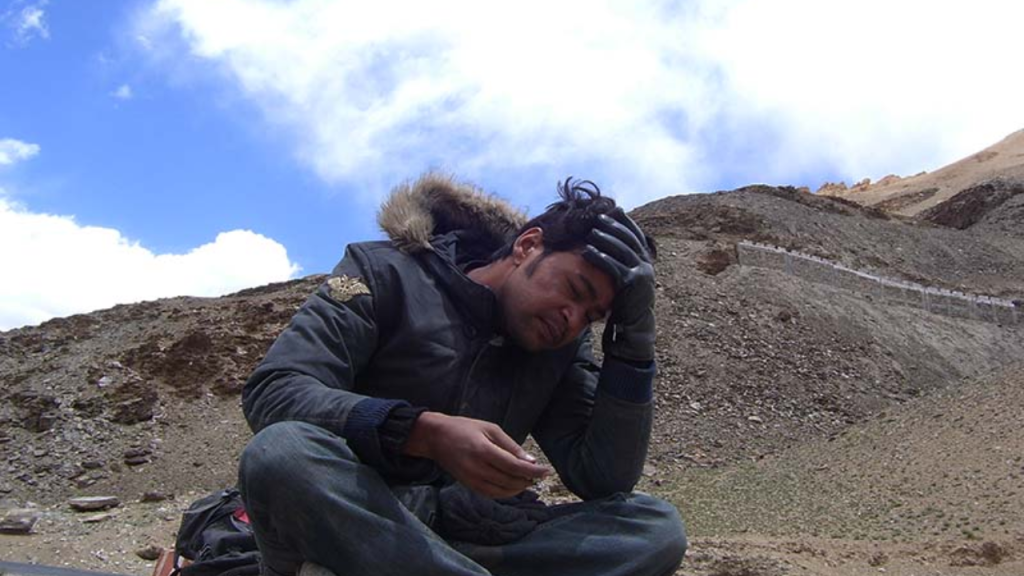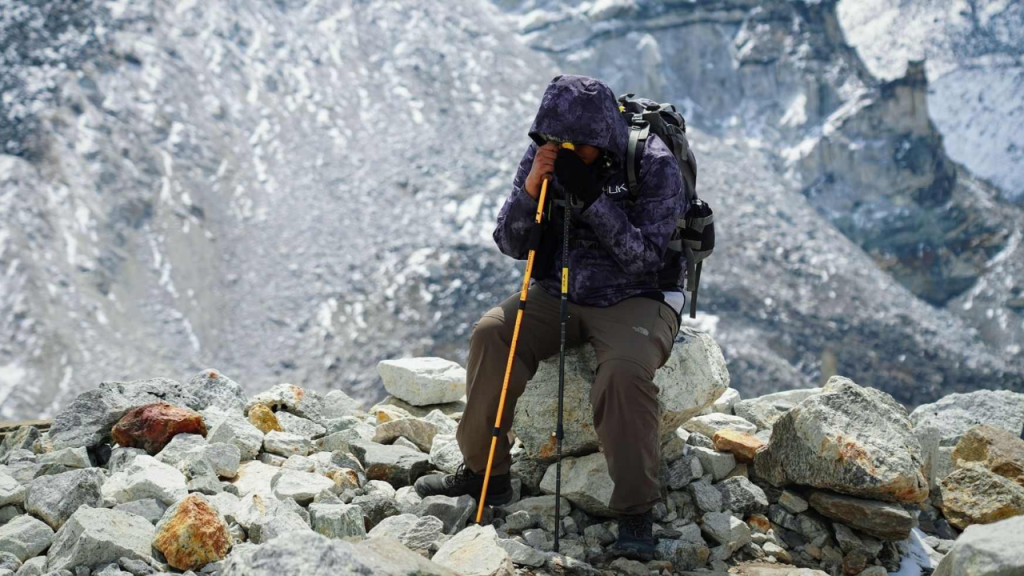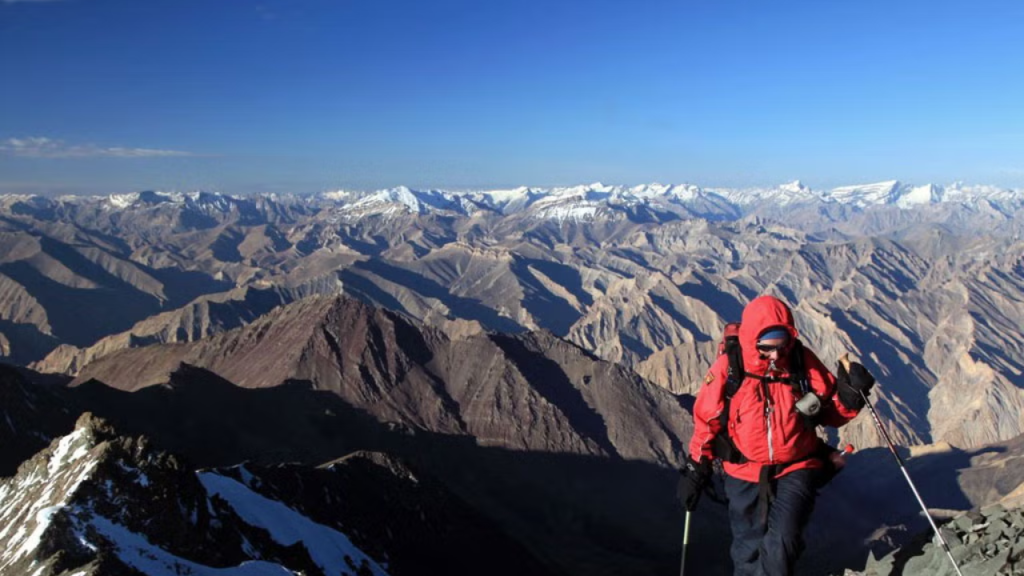Blog
Understanding High Altitude Sickness in Leh Ladakh
High altitude sickness, also known as acute mountain sickness (AMS), is a common concern
Adventour
High altitude sickness, also known as acute mountain sickness (AMS), is a common concern for travelers exploring the breathtaking landscapes of Leh Ladakh. Situated at an average altitude of 3500 meters above sea level, this region offers stunning vistas but poses challenges due to its high elevation. This blog will delve into the causes, symptoms, prevention, and remedies for altitude sickness to ensure a safe and enjoyable adventure in Leh Ladakh.
Altitude sickness occurs when the body struggles to adapt to decreased oxygen levels at higher elevations. The primary cause is the reduced air pressure and oxygen levels in the atmosphere. As travelers ascend to Leh Ladakh, the thin air makes it harder for the body to absorb an adequate amount of oxygen, leading to symptoms of altitude sickness.
Symptoms of Altitude Sickness
Recognizing the symptoms of altitude sickness is crucial for prompt intervention. Common signs include headaches, nausea, dizziness, fatigue, and shortness of breath. Severe cases may manifest as vomiting, confusion, and difficulty walking. It’s essential to pay attention to these symptoms, especially within the first 24-48 hours of arrival at high-altitude destinations like Leh.
Read Also:- Why You Should Go on Expeditions?
Altitude sickness can manifest in various symptoms, affecting individuals differently. Here are the common signs:
- Headache: One of the earliest and most prevalent symptoms of altitude sickness is a persistent headache, often described as throbbing or pounding.
- Dizziness or Lightheadedness: Feeling dizzy or lightheaded, especially when standing up or moving, is another common symptom of altitude sickness. It can contribute to a sense of unsteadiness and discomfort.

- Nausea and Vomiting: Altitude sickness may cause nausea, sometimes leading to vomiting. These gastrointestinal symptoms can significantly impact a person’s comfort and well-being at higher altitudes.
- Fatigue and Loss of Energy: Individuals experiencing altitude sickness often report feeling unusually fatigued and lacking energy. This fatigue can interfere with daily activities and diminish overall enjoyment.
- Shortness of Breath: Difficulty breathing or shortness of breath, especially during exertion, is a common symptom of altitude sickness. It occurs due to the decreased oxygen levels at higher elevations.
- Problems with Sleep: Altitude sickness can disrupt sleep patterns, leading to difficulty falling asleep or staying asleep throughout the night. Poor sleep quality exacerbates other symptoms and can leave individuals feeling fatigued during the day.
- Loss of Appetite: Many people with altitude sickness experience a diminished appetite, leading to reduced food intake. This loss of appetite can contribute to fatigue and weakness.

- Rapid Pulse (Heart Rate): An elevated heart rate, or tachycardia, is a physiological response to decreased oxygen levels. It helps the body compensate for reduced oxygen availability but can be uncomfortable for individuals experiencing altitude sickness.
Read Also:- Let’s Plan A Trip To Ladakh- Ladakh tour packages
Prevention Measures
Preventing altitude sickness involves gradual acclimatization and proper hydration. Travelers should ascend slowly, allowing their bodies time to adjust to the altitude. Additionally, staying hydrated helps combat dehydration, a common trigger for altitude sickness. Avoiding alcohol and caffeine can also aid in acclimatization by reducing dehydration risks.
Medication and Treatment
In some cases, travelers may require medication to alleviate altitude sickness symptoms. Acetazolamide, commonly known as Diamox, is a medication that helps prevent and treat altitude sickness by increasing the excretion of bicarbonate in the urine, which stimulates breathing and improves oxygenation. However, it’s crucial to consult a healthcare professional before taking any medication and to be aware of potential side effects.
Remedies for Altitude Sickness
Aside from medication, several remedies can alleviate symptoms and promote acclimatization. Resting and avoiding strenuous activity allow the body to adapt gradually to the altitude. Additionally, consuming carbohydrates and avoiding heavy meals can help reduce nausea and aid digestion. Some travelers find relief through herbal remedies like ginger tea or chewing on coca leaves, although the effectiveness of these methods varies.

FAQ: High Altitude Sickness in Leh Ladakh
Altitude sickness, also known as acute mountain sickness (AMS), occurs when the body struggles to adapt to decreased oxygen levels at higher elevations. In Leh Ladakh, which is situated at an average altitude of 3500 meters above sea level, the thin air makes it harder for the body to absorb an adequate amount of oxygen, leading to altitude sickness.
Common symptoms of altitude sickness include headaches, nausea, dizziness, fatigue, and shortness of breath.
Preventing altitude sickness involves gradual acclimatization, proper hydration, and avoiding alcohol and caffeine. Travelers should ascend slowly, allowing their bodies time to adjust to the altitude, and stay hydrated to combat dehydration risks.
Conclusion
In conclusion, altitude sickness is a common concern for travelers exploring the enchanting landscapes of Leh Ladakh. By understanding its causes, recognizing symptoms, and implementing preventive measures, adventurers can enjoy a safe and memorable experience in this high-altitude region. Whether it’s gradual acclimatization, proper hydration, or seeking medical assistance when necessary, prioritizing health and safety ensures a fulfilling adventure amidst the majestic beauty of Leh Ladakh. For those planning their trip to Leh Ladakh, companies like Adventour offer specialized tours and guidance to ensure a seamless and enjoyable journey through this breathtaking terrain.
- altitude leh
- altitude sickness
- altitude sickness medication
- altitude sickness symptoms
- altitude sickness treatment
- elevation of leh ladakh
- expedition in ladakh
- High Altitude Sickness
- Himalaya Expedition
- ladakh expeditions
- ladakh oxygen level
- Leh Ladakh Car Trip
- leh ladakh elevation
- leh ladakh summer
- leh ladakh winter
- oxygen level in ladakh
- Road Trip to Ladakh
You might also like

Embark on the Ultimate Adventure: Your Ultima
Embark on the Ultimate Adventure: Your Ultimate Guide t...

Exploring the Vibrant Festival in Ladakh
Nestled in the pristine beauty of the Himalayas, Ladakh...